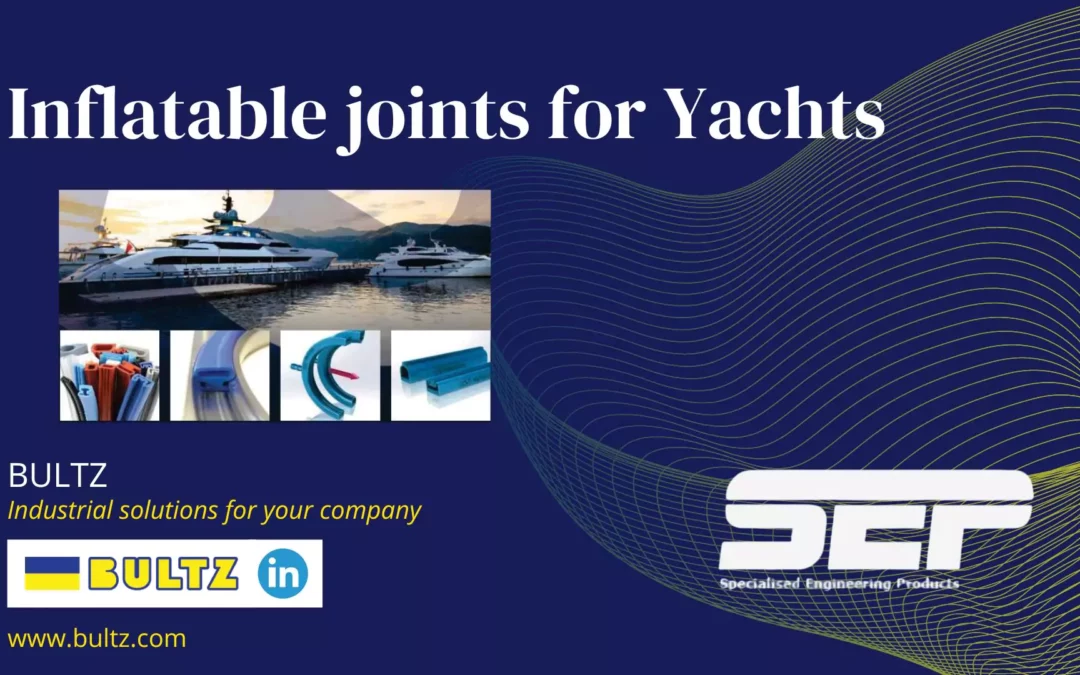In the fascinating world of yachts and watercraft, structural integrity and watertightness are imperative to ensure not only optimal performance but also safety and comfort on board. In this context, inflatable seals emerge as essential components, playing a fundamental role in various applications that go beyond merely providing a hermetic seal.
From protecting against water entry in critical areas to optimizing stability and balance, this article explores in detail the multiple functions and benefits that inflatable seals bring to the maritime world, contributing to the efficiency and safety of yachts and watercraft of all types and sizes.
Applications of inflatable seals for yachts:
Inflatable seals perform various functions in yachts and watercraft, contributing to their performance, safety, and comfort. Here are some key applications and places where these seals are installed:
- Hermetic sealing in gates and hatches: Inflatable seals are installed around gates and hatches to achieve a hermetic seal. This prevents unwanted water entry into crucial areas of the yacht, such as the engine room, cabins, and other sensitive zones.
- Watertightness in windows and portholes: In areas where windows and portholes are located, inflatable seals provide effective sealing to prevent water leaks. This is essential during adverse weather conditions or when the vessel is in motion.
- Vibration and shock absorption: Inflatable seals are used to absorb vibrations and shocks, improving onboard comfort and reducing structural wear. They are strategically placed in critical points, such as in contact with docks or other vessels.
- Weight compensation and stabilization: In larger yachts, inflatable seals are part of weight compensation systems. These systems allow adjusting the load distribution by selectively inflating or deflating the seals, contributing to the stability and balance of the vessel.
- Sealing around propulsion systems: In areas near propulsion systems, such as propellers and shafts, inflatable seals provide a hermetic seal. This prevents water entry and ensures efficient performance of the components.
- Connections in the hull: Inflatable seals are installed in critical hull connections, such as joints between different sections of the yacht or areas where underwater equipment is installed. They ensure a secure seal to maintain structural integrity and prevent leaks.
These are just some typical applications of gas springs in watercraft, and their versatility makes them valuable components for enhancing operation and onboard experience.
The importance of choosing the right material in maritime environments
Selecting the appropriate inflatable gasket with resistant materials is a crucial consideration in maritime environments, where challenging conditions can test the durability and performance of nautical components. The choice of the correct material not only influences wear resistance but also directly impacts the sealing effectiveness and the ability of the gasket to fulfill its specific functions. Here, the importance of choosing an inflatable gasket with suitable materials for maritime environments is evident in several key aspects:
- Corrosion resistance: Maritime environments are full of salt moisture, which can accelerate the corrosion of metallic materials. Opting for inflatable gaskets manufactured with corrosion-resistant materials, such as elastomers and specific compounds, is essential to ensure the long-term integrity of the gasket.
- Dimensional stability: Variations in temperature and constant exposure to water can affect the dimensional stability of materials. Inflatable gaskets must maintain their shape and resist deformation, even in changing environmental conditions, to ensure effective sealing over time.
- UV resistance: Constant exposure to the sun can degrade some materials over time. Inflatable gaskets used outdoors must be UV-resistant to prevent cracking and premature deterioration due to solar radiation.
- Durability in aggressive environments: Inflatable gaskets may face severe maritime conditions, such as impacts from saltwater, abrasion, and contact with rough surfaces. Choosing durable and wear-resistant materials is essential to ensure sustainable performance in these environments.
- Flexibility in extreme temperatures: Temperature fluctuations in maritime environments can be significant. The materials of the inflatable gasket must be flexible over a wide range of temperatures to maintain functionality and sealing capability in cold or hot conditions.
BULTZ: Distributor of Inflatable Seals
The SEP brand has established itself as a leading supplier of inflatable seals for specialized applications, including those designed for watercraft. With a focus on quality and durability, inflatable seals made from top-notch materials ensure reliable performance in demanding maritime environments.
In the Iberian Peninsula, Bultz is the specialized distributing company for all types of sealing solutions, serving the maritime industry in Spain and Portugal. As a strategic partner, at Bultz, we are committed to providing high-quality solutions
CONTACT US
RELATED POSTS


